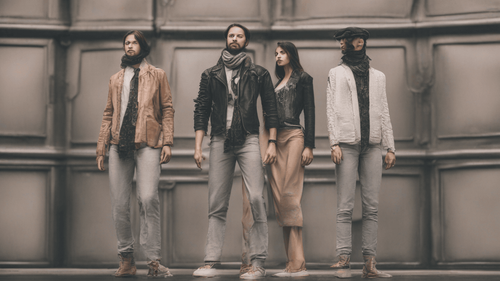
Introduction: Unleashing Innovation Through Generative AI Images
In the ever-evolving landscape of artificial intelligence, one fascinating breakthrough stands out - Generative AI Images. This revolutionary technology has redefined the boundaries of human creativity, enabling machines to produce captivating and imaginative visuals that once resided solely in the realm of human artists. In this article, we delve into the captivating world of generative AI images, exploring its applications, benefits, and the profound impact it has on various industries.
Generative AI Images: Redefining the Artistic Landscape
In the realm of digital art and creativity, the emergence of generative AI images has been nothing short of a game-changer. Leveraging advanced machine learning algorithms, these systems can autonomously create images, often with astonishing levels of complexity and detail. The integration of generative AI into the creative process has given birth to new forms of expression, sparking collaborations between artists and machines to co-create stunning visual masterpieces.
The Creative Process Unveiled: How Generative AI Images Work
Generative AI images operate on the foundation of complex neural networks, particularly Generative Adversarial Networks (GANs). GANs consist of two neural networks - a generator and a discriminator - engaged in a continuous feedback loop. The generator creates images, aiming to produce content that the discriminator cannot distinguish from genuine human-created art. Through iterative refinement, the generator's output progressively aligns with human aesthetic sensibilities, leading to the creation of highly compelling visuals.
Applications Across Industries: Where Generative AI Images Shine
Generative AI images transcend the boundaries of traditional artistry, finding applications across diverse industries:
Visual Arts and Design: Bridging Human and Machine Creativity
In the realm of visual arts, generative AI images have sparked a dynamic interplay between human artists and algorithms. Collaborations between creative minds and AI systems have resulted in mesmerizing artworks that challenge conventional notions of authorship and creativity.
Fashion and Apparel: Crafting the Future of Style
Generative AI images have made significant inroads into the fashion industry. Designers harness the power of AI to generate avant-garde patterns, textures, and styles that push the boundaries of conventional design, ushering in a new era of sartorial innovation.
Medical Imaging: Enhancing Diagnostic Precision
The medical field benefits from generative AI images by enhancing diagnostic accuracy. AI-generated medical images aid in the identification of anomalies, assisting healthcare professionals in making informed decisions and providing superior patient care.
Entertainment and Gaming: Creating Immersive Experiences
The entertainment sector embraces generative AI images to create immersive digital worlds and lifelike characters. AI-driven content generation enriches storytelling, enabling game developers and filmmakers to craft captivating narratives.
Architectural Visualization: Envisioning Tomorrow's Spaces
Architects and urban planners leverage generative AI images to visualize architectural designs. These images help stakeholders and clients better understand spatial concepts, leading to more informed design decisions.
Marketing and Advertising: Crafting Compelling Campaigns
Generative AI images find a place in marketing by facilitating the creation of captivating visuals for advertising campaigns. Brands leverage AI-generated imagery to engage audiences and convey messages that resonate.
Advantages of Generative AI Images: Fueling Creativity and Innovation
The adoption of generative AI images offers a plethora of benefits across industries:
Enhanced Creative Exploration:
Generative AI empowers artists and designers to explore uncharted territories of creativity, pushing the boundaries of artistic expression beyond conventional limits.
Efficiency and Iteration:
AI accelerates the creative process, enabling rapid iteration and experimentation. Designers can efficiently generate a multitude of concepts, refining and fine-tuning their ideas.
Augmented Collaboration:
Collaborations between human creatives and AI systems foster a unique synergy, culminating in outcomes that blend the strengths of both worlds, leading to unparalleled innovations.
Data-Driven Design Insights:
Generative AI harnesses vast datasets, extracting valuable insights that inform the creative process, resulting in designs that resonate deeply with target audiences.
Personalization and Customization:
Industries like fashion and interior design benefit from AI's ability to create tailored designs, catering to individual preferences and requirements.
FAQs About Generative AI Images
How does Generative AI differ from traditional art?
Generative AI creates art autonomously based on algorithms and data, while traditional art involves manual human creativity and expression.
Can Generative AI completely replace human artists?
Generative AI is a tool that enhances creativity and assists artists, but it cannot replicate the nuanced emotions and intentions of human artists.
Are there ethical concerns surrounding AI-generated art?
Yes, ethical debates arise concerning authorship, copyright, and the uniqueness of AI-generated artwork.
What role does data play in Generative AI image creation?
Data serves as the foundation for AI models, influencing the quality and style of generated images.
How can Generative AI images be used in education?
Generative AI can aid educators in visually illustrating complex concepts, making learning more engaging and comprehensible.
What challenges does Generative AI still face in image creation?
Challenges include avoiding biases present in training data and achieving consistent and meaningful creativity.
Conclusion: A New Horizon of Creative Expression
Generative AI images stand as a testament to the boundless potential of human ingenuity and technological advancement. As AI continues to evolve, we are poised at the brink of a new artistic era, where machines and humans collaboratively shape the visual landscape. The fusion of creativity, data, and innovation holds the promise of unlocking hitherto unexplored realms of beauty, imagination, and inspiration, forever changing the way we perceive and interact with the world around us.